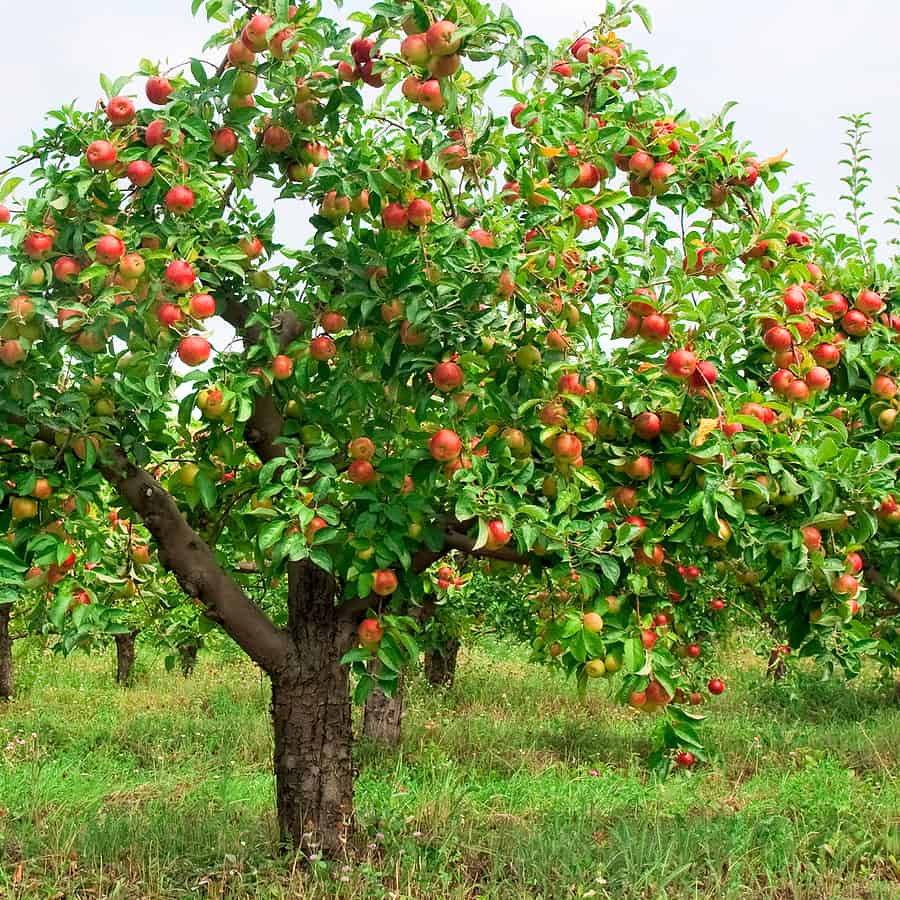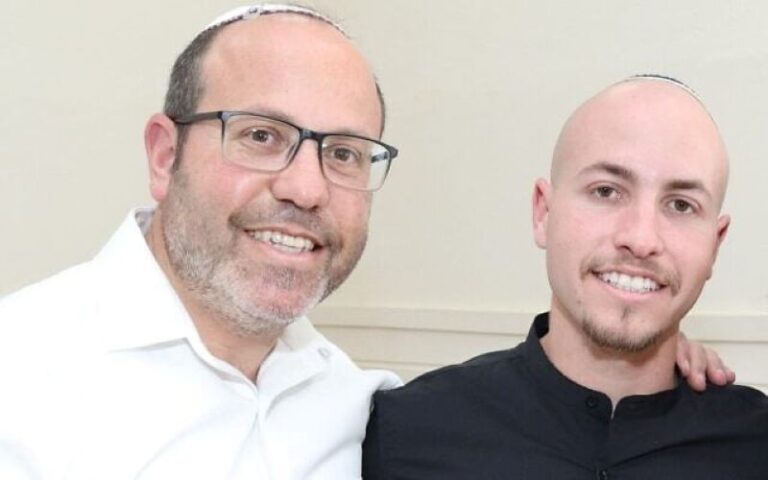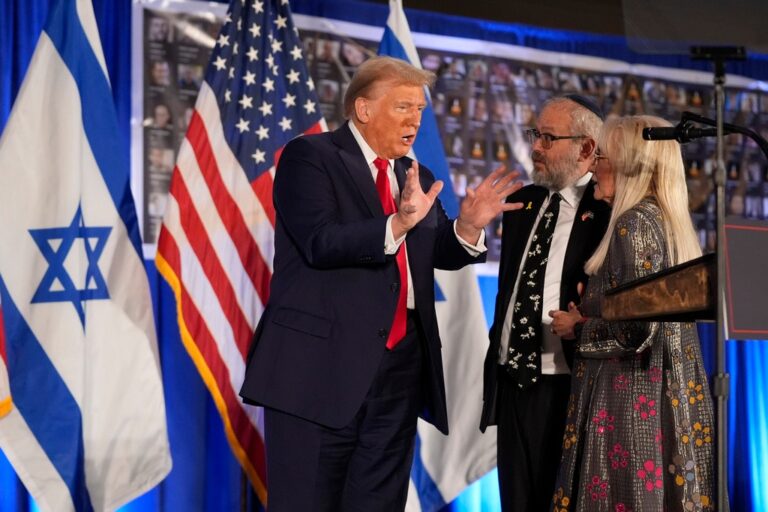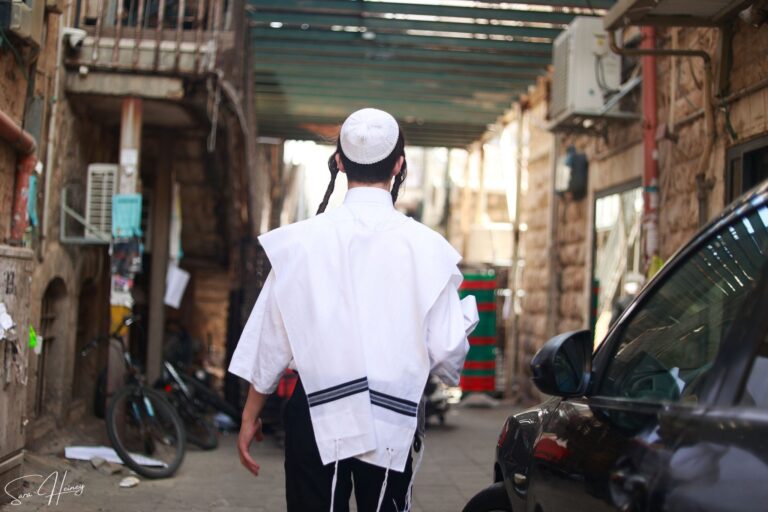By Rabbi Yair Hoffman
The Talmud (Brachos 43b) tells us that during the month of Nissan, when one goes out and sees trees blossoming recites the blessing, “Who has not left lacking in His world etc.” [The blessing is recited upon fruit trees that are blossoming].
On this small section of the Gemorah, and in the spirit of Isru Chag Pesach, let us pose four questions:
- Is the bracha obligatory or not? Even if not, is there an inyan to do it?
- Also, what is the exact wording of the bracha? Do we follow the Shulchan Aruch and Talmud or do we follow the Siddur? [We will briefly answer this question and then go on a long excursus after we answer the four questions, but first precede it with a short dvar Torah]
- What is the timing of the Bracha? – What happens if Nissan passes and you didn’t say it?
- Are there trees that one doesn’t recite the blessing upon?
Let’s try to answer the questions one by one.
- These blessings are referred to as Birchas HaR’iyah. As far as whether the bracha is obligatory or not, the wording in the Talmud is, “one who sees..” The Ramban (Brachos 51b) writes that like all similar Brachos – it refers to one who sees these things but not that there is an obligation to go out and see it. By the same token, the Maharsha (Brachos 57b) explains that the obligation to go and attempt to see secular kings is NOT in order to recite the blessing, but rather to eventually be able to distinguish between a secular king, and the future Melech haMashiach.
The Chida, however, writes in his Moreh v’Etzbah (#199) that one of the reasons for reciting this bracha is to be abe to provide a tikkun a rectification for the neshamos (souls) that have been reincarnated as trees during this time. It may be that it is for this reason that he writes earlier (#198) that a person should try to make this blessing.
Furthermore, the Eliyahu Rabbah (OC 226:1) writes that one who is careful regarding this bracha, upon him lies the blessing (that Yitzchok gave to Yaakov) of, “Behold, the fragrance of my son is like the fragrance of a field, which Hashem has blessed!” – The implication may be like the Midrash Tanchuma (Toldos 16) states that the aroma of a Tzaddik is like the aroma of Gan Eden itself.
- As far as the text of the bracha is concerned, the wording is either “shelo chiser beolamo klum” as the Gemorah states or “shelo chiser beolamo davar” as some of the Siddurim have it. The Talmud uses the word “Klum” which means nothing. The version in the current editions of the Siddur have the word “Davar” meaning “something.” The Shulchan Aruch (OC 226) and all the Rishonim use the word “Klum.” The Rambam in his Mishna Torah (and all manuscripts of the Rambam Oxford and Teiman) also utilize the term Klum. The Dikdukei Sofrim which has numerous alternative Talmudic texts from manusceipts has no mention of the term “Davar.” Dayan Weiss in his response work (Minchas Yitzchok Volume X #16) writes that the wording “Davar” is incorrect and should be stopped.
- In regard to the timing of the bracha , the month of Nissan is “lav davka” – not specific, according to the Mishna Brurah (226:1) and numerous Rishonim. The Chida in his Birchei Yoseph writes, “And I heard in the name of the Kabbalists that it is specifically during Nissan.” The Mishna Brurah writes (OC 25:42) that whenever the Poskim and the Kabbalists argue the halacha is like the Poskim, but when the Kabbalists are more stringent, one should likewise be stringent. Rabbi Ephraim Greenblatt (Rivevos Ephraim Vol. IV #173 writes that he once saw Rav Moshe Feinstein zt”l recite the bracha in Iyar).
- Now are there trees upon which the bracha is not recited? The Mishna Brurah rules that we do not recite the bracha on non-fruit trees (226:2). If the fruit tree is grafted, there is a debate as to whether a blessing is recited – just as there is a debate in regard to whether one would recite a shehecheyanu on it. [See Minchas Yitzchok, Vol. III #25]. Rabbi Akiva Eiger in his comments on SA OC 226 is unsure as to whether the blessing is recited on Orlah trees (trees less than 3 years old).
SHORT DVAR TORAH
In explanation as to why the Mekuballim are of the opinion that it should be recited in Nissan, perhaps we can suggest the following thought. Nissan is the month of Geulah – redemption.
Since the Chida writes that one of the reasons this bracha is recited is to provide a tikkun (rectification) for those neshamos trapped in the trees who were reincarnated there, we know (Bava Kamma 92a) that one who prays for another is answered earlier. Thus, we are concerned for these neshamos, and perhaps our Geulah will come during Nissan.
EXCURSION
Getting back to the exact text of the bracha, the question is: where did the word “Davar” originate from? Who started it and what was the motivation?
Let us take a little history trip in order to discover the origin.
Apparently, sometime in the late 1600’s or early 1700’s a very erudite and learned gentile converted in the city of Amsterdam and took on the name Israel Ben Abraham. He immigrated to Germany and worked as a setter in various printing houses there. In 1716, he purchased the printing equipment of Moses Benjamin Wulff and launched his own printing house in Koethen, Germany.
Wulff used to print in Dessau but permission to print there was rescinded. The equipment had been transferred to another Ger Tzedek who printed in Halle. Printing in Halle soon came to an end as well and the equipment went back to Moses Benjamin Wulff who transferred it to Israel Ben Abraham.
In Koethen, Israel Ben Abraham ran into some problems because it was a city that did not allow for the residence of Jews. It also did not permit books to be published in Hebrew only. For a book to be published it needed to also be in the vernacular. There, he printed the Rosh Yoseph, Derech HaChaim, Derech HaKodesh, and the Orchos Tzaddikim. These were printed in 1717 and 1718. He had the assistance of Rabbi Yishayahu Ben Isaac and Rabbi Chaim Ben Abraham Gomprecht.
Israel Ben Abraham needed to relocate, however, in order to further develop his printing house. He moved his operations to Jessnitz, also in the Anhalt district which is now the state of Saxony in Germany. He brought his workers from Koethen and also obtained the assistance and backing of a number of wealthy court Jews. One of them was Issachar HaLevi Bermann Behren Lehman of Halberstadt. There he printed the Shaarei Durah, the Alshich’s work, the Damesek Eliezer and, most significant to our story, in 1724 -Reb Zalman Henna’s “Beis Tefillah.” A number of tractates of the Talmud were printed there as well. A good overview of the history of the printing house in Jessnitz can be found in Marvin Heller’s “Printing the Talmud.”
Reb Zalman Henna, also known as Reb Shlomo Zalman Ben Reb Yehudah Leib from Henna, was a noted grammarian who authored several works on Hebrew grammar. Sefer Zohar HaTeiva is one such book that can be found on Hebrewbooks.org. His grammatical explanations are interesting, but at times diverge from Talmudic sources. It may also be noted that the word “Klum” does not appear in TaNaCh. The general trend of Hebrew grammarians at the time (and even later) was purism. Henna may have theorized that since Klum did not exist in TaNaCH – the original version must have been “Davar.”
Regardless, this was the first time the term “Davar” in regard to the blessing on trees was printed in a Siddur. The Siddur of Rabbi Yaakov Emden, “Bais Yaakov” disagrees with the Jessnitz Siddur, but does not attack him on it.
Rabbi Yaakov Lorberbaum’s Siddur, “Derech HaChaim” is the next to appear with the word Davar – but this was done by the printers.
It seems to this author that the author of the work Maaseh Chemed, Rabbi Eliyahu Cohen, who attributes this version to the Raavad in his Sefer HaEshkol is incorrect and that the wording was a later addition not found in the original manuscripts or prints of that work.
Dayan Weiss in his Minchas Yitzchok Volume X #16 writes that he has not seen it earlier than the work Schios Chemda printed in Vienna, however. We have shown, however, an earlier printing of it. Regardless of the first source, Dayan Weiss has strongly discouraged the use of “Davar” in the blessing.
So where did it come from? Some Poskim have suggested that it was a correction to the Talmudic formulation of the word because the word Davar is found in the book of Dvarim (2:7), where it states, “Hashem Elokecha imach lo chasarta davar.” Still, though, it is rather difficult to make an emendation in the Talmudic text with no other extant version that would have that text.
This author would like to suggest that Reb Zalman Henna, as brilliant as he was, may have held himself to be a superior grammarian to the earlier authorities, including the Rishonim and Gaonim. Perhaps he felt that it was not conceivable that the sages would have enacted a blessing with a formulation of their own that lies in contrast to a similar Biblical formulation. That combined with the lack of the term “Klum” in TaNaCH may have clinched his decision. He, therefore made the change, perhaps in conjunction with Israel Ben Abraham as well, who also had innovative tendencies. Other prayer books followed suit by dint of the fact that Reb Zalman Henna was by a grammarian of distinction. There may have been an intimidation factor here.
The halachic works, however, held fast and did not change. Gradually, most of the Siddurim, with some notable exceptions (such as that of the first Lubavitch Rabbi) adopted the work of Reb Zalman Henna – not only in terms of the formulation of this blessing, but in other issues of grammar too. They did not necessarily openly admit to it, perhaps because they felt that grammar was not their area of expertise. In a similar vein, it could very well be that the Bnei Torah who punctuate texts in our times that have vowelization incorporated inside the work also may take a lead from the vowelization developed by someone else.
Regardless, as to how and why the change evolved, it is the view of our leading Poskim that we revert back to the formulation found in the Gemorah and in the Shulchan Aruch. So, publishers of siddurim, if you’re out there listening, you may want to revisit the issue.
The author can be reached at yairhoffman2@gmail.com











